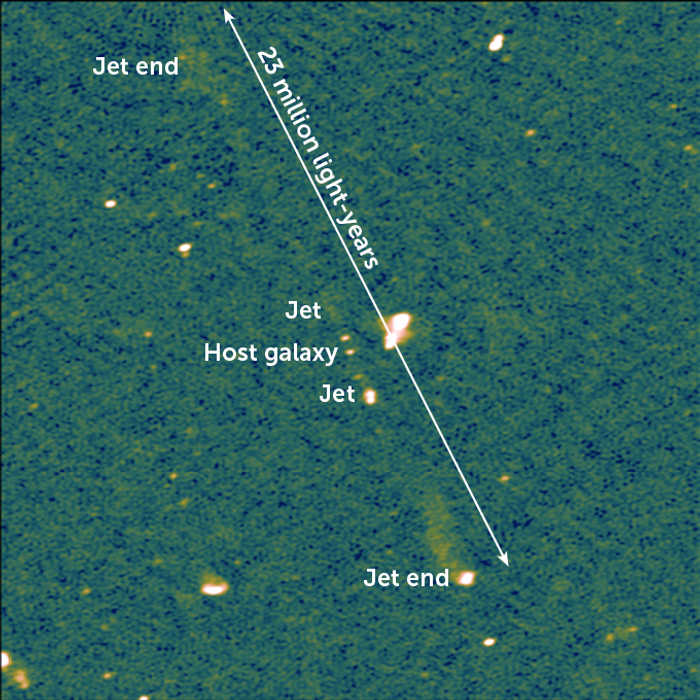Published 01:28 IST, September 22nd 2024
Porphyrion: The 23 Million Light-Year Black Hole Jet Redefining Cosmic Evolution
Astronomers have discovered Porphyrion, a 23 million light-year black hole jet, suggesting it influences cosmic evolution and the structure of the universe.
In a groundbreaking discovery, astronomers have identified the longest pair of black hole jets ever observed, stretching an astonishing 23 million light-years. This monumental finding, reported in the journal Nature on September 18, suggests that these jets have the potential to influence the evolution of the universe on a cosmic scale.
“Traditionally, astronomers believed all jets remain within, or at least very close to, their host galaxy,” stated astrophysicist Martijn Oei of Caltech during a news conference on September 16. “We present evidence that supermassive black holes don’t only hold sway over the galaxy, but also of the cosmic web that surrounds them.”
Most massive galaxies are thought to harbor supermassive black holes at their centers, some of which emit high-energy fountains of charged plasma into space. These jets can significantly affect the structure and evolution of their host galaxies by slowing or even halting star formation.

The newly discovered jets, aptly named Porphyrion after a rebellious giant in Greek mythology, were detected through observations from LOFAR, a network of radio wave detectors based in the Netherlands. Remarkably, Porphyrion exceeds the previous record-holder by approximately 7 million light-years, indicating that its influence may extend beyond the confines of individual galaxies.
Further observations suggest that Porphyrion’s home galaxy is situated within a filament of the cosmic web—the intricate structure of gas and galaxies that contains most of the universe’s ordinary matter. The jets originated during an early epoch of the universe, roughly half its current age, when cosmic filaments were more closely intertwined. Oei and his team estimate that these jets could span up to two-thirds of the distance across the voids separating cosmic filaments.
Porphyrion is not a solitary phenomenon. A citizen science initiative aimed at identifying large black hole jets has uncovered over 10,000 jets measuring around 3 million light-years or more, although none match Porphyrion's size.
“Those large black hole jet systems might be less rare than we thought,” Oei remarked. “So they might have a larger influence than we expected.”
As astronomers continue to unravel the mysteries of the universe, this discovery underscores the profound impact of supermassive black holes and their jets on cosmic evolution.
Updated 01:28 IST, September 22nd 2024